Saramonic Ultra: one-minute review
The Saramonic Ultra is a portable wireless mic system in the same vein as the popular DJI Mic and Mic 2. Aimed primarily at people who need to create audio and video content on the go – vloggers, podcasters and journalists – the Ultra is available as a package containing two wearable transmitters, one receiver and a portable charging case to keep everything together.
This kit allows for single and dual-channel audio, and the receiver can be connected to a variety of devices for adding high-quality 24-bit sound to recordings. Adapters are included for iPhones, iPads, USB-C smartphones and computers, 3.5mm camera inputs and even for Sony’s Multi Interface Shoe, but the transmitters can also record audio on their own thanks to 8GB of on-board space. When recording directly onto this memory, users can even record 32-bit float audio – a data-rich, high dynamic range format prized by audio professionals.
Saramonic’s build quality doesn’t feel quite as rock-solid as some of the alternatives, but the fact that the transmitter is waterproof to IPX5 levels suggests that the company is doing something right. And, despite the noise cancelling being far from the most effective I’ve encountered with wireless mics, the audio quality is generally excellent in a variety of environments.
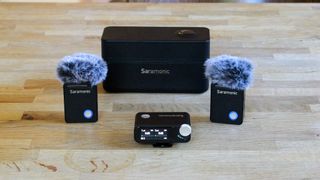
Saramonic Ultra: Price and release date
- $249 / £259 / AU$449 for 2-Channel Set with receiver, two transmitters and charging case
- Also available with lavalier mics included
- Available now in black and white colour finishes
The Saramonic Ultra is available to purchase in a set that includes two transmitters, one receiver, a charging case, adapters for Lightning, USB-C and Sony Multi Interface, a 3.5mm to 3.5mm cable, two windscreens and a drawstring bag to hold everything. This package is available in a black or white finish and costs around $249 / £259 / AU$449. For a little more money, you can purchase the same package with two cabled lavalier mics included ($299 / £289).
As far as I can see it isn’t possible to buy the individual components separately, or just a transmitter and receiver package (as is available for those who want to save money on a DJI Mic 2, for instance).
That being said, at a price that falls quite a bit below that of premium rivals like the DJI Mic 2 and Rode Wireless Pro, and even below the relatively affordable Sennheiser Profile Wireless, the Saramonic can lay claim to being one of the most affordable higher end wireless mic sets around.
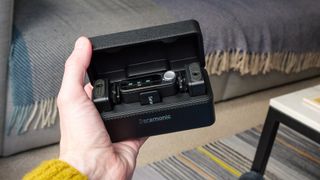
Saramonic Ultra: Specs
Swipe to scroll horizontally
| Dimensions | 45.5 x 33.5 x 15mm (transmitter); 117 x 48.5 x 62.4mm (charging case) |
| Weight | 35g (transmitter); 210.5g (charging case) |
| Transmission range | 300m (w/ antenna)/ 250m |
| Connectivity | Receiver: USB-C, USB-C/Lightning out, 3.5mm input; Transmitter: USB-C, 3.5mm input |
| Battery | 6 hours, plus two additional charges from the case |
| Audio | 16, 24 and 32-bit |
| Noise cancelling | Yes |
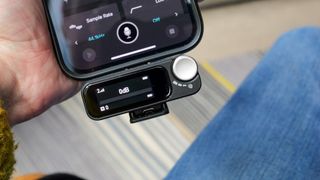
Saramonic Ultra: Design
- Most elements slot into charging case for transport
- Entire package weighs 210.5g / 7.4oz
- Adapters for USB-C, Lightning and Sony Multi Interface Shoe included
Like most wireless mic setups, the Saramonic Ultra is centered around two main elements: a small wearable transmitter and an almost as small wearable receiver. The transmitter (of which two are supplied here) has a clip and a strong magnet allowing it to be attached to clothing, with the magnet being best suited to thin garments like t-shirts. It has a USB-C port for charging and data transfer purposes, and a 3.5mm jack for attaching a wired lavalier mic if desired. The transmitters are IPX5 certified too, making them waterproof against rain – something I’ve not seen with rival mics.
The receiver, which links wirelessly to either one or two transmitters, also has a clip, which doubles as a mounting option for sliding into camera cold shoes. It also comes with adapters for Lightning and USB-C devices, and something I haven’t seen on its competitors: an optional antenna to boost its wireless range to 300m (Saramonic claims the range without the add-on is 250m). The receiver also features an OLED touchscreen accompanied by a pressable dial for adjusting settings and viewing gain levels which, while both are small, I had few problems using. Those of a larger fingered persuasion may find them a tad fiddly, however.
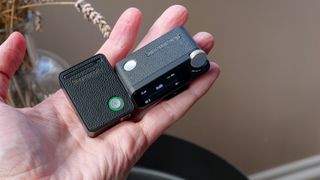
The supplied charging case has room for both transmitters, the receiver and the Lightning and USB-C adapters for the latter. Unfortunately, there’s no space inside for extras like the transmitter’s windshields or any of the cables. Still, the case, which has a leather-effect texture and a nice light-up logo on top to indicate remaining battery life, is a neat way to carry (and recharge) the core elements of this setup. Its construction is a little creaky compared to that of the DJI Mic 2’s case, but not to the degree I’d be concerned about it falling apart.
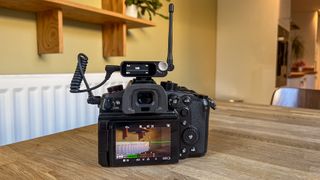
Saramonic Ultra: Performance
- Choice of 16, 24 and 32-bit recording
- Transmitters can be used solo
- Noise reduction, Vocal Boost and Low Cut modes
Like the DJI Mic 2 and Rode Wireless Pro, the Saramonic Ultra has an option to record high-quality 32-bit float audio directly onto the 8GB on-board memory of the transmitters. 32-bit float is to standard 16 or 24-bit audio what RAW photographs are to JPEGs – a much larger file size with much more data, allowing for more post-production manipulation of the sound. In my opinion, while it’s a useful option to have, particularly for professional users, the smaller file sizes of the 24-bit audio, and the fact that it can be transmitted wirelessly, means I’d be using 24-bit audio nine times out of ten.
It’s not like the 24-bit audio is bad, either. In fact, it’s nice and crisp, and turning on the Vocal Boost mode lends speech some real heft and body. If you want your voice to sound deeper and more authoritative, it’s probably going to be switched on most of the time. The mic can also be set to record 16-bit audio, which is presumably included as a space-saving option.
Another optional mode is Low Cut, which removes some of the lower frequency noise from recordings, and the three-level noise cancelling mode does reduce background sounds – albeit not to the extent of the highly effective noise cancelling employed by the DJI Mic 2. For example, traffic noise was still very loud in my test recordings, even with Saramonic’s noise cancelling dialled up to its top level.
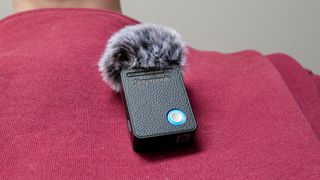
Wind noise is also noticeable on my outdoor recordings, even in relatively calm conditions, which is why the furry windshields should rarely leave the transmitters if you’re using them outside – they do a good job of reducing it.
Gain can be set manually, with the receiver’s screen providing both a live indication of levels and a means for adjustment, but the Auto Gain setting can also be used in trickier, changeable environments. It’ll adjust gain on the fly to compensate for changes in background noise or subject distance from the mic, so it’s ideal for non-studio settings.
There’s no backup recording mode here, so no protection against signal drops. That being said, with the antenna attached you should get a consistently strong wireless signal. I wouldn’t rely it to work perfectly over the 300m maximum range claimed by Saramonic (and I take all manufacturers’ range claims as best-case scenarios) but for the vast majority of users that’s never going to be put to the test. I had no signal issues myself using the microphone while walking around my home, despite walls and floors potentially getting in the way.
Another pro-friendly feature you’ll find here is timecode support, allowing users of multi-camera shoots to easily sync their mics and cameras in post-production. It’s something few people will use, but very handy to have – and of the recent wireless mic launches, this and the Rode Wireless Pro are the only two models that offer it.
Battery life is decent, with around 6 hours of operating time on each transmitter and the receiver, plus an addition 12 or so hours (or two charging cycles) in the charging case. In theory, you can record for around 18 hours in total before needing to find a power socket to recharge.
Should I buy the Saramonic Ultra?
Buy it if…
You want an affordable pro-friendly wireless mic
The Saramonic Ultra is packed with useful and often premium features, such as 32-bit float recording, despite being one of the more affordable wireless mic packages around.
You need a waterproof solution
With IPX5-rated water resistance, you could use the Saramonic Ultra’s transmitters in a rainstorm (or even during your morning shower) without fear of damage.
Don’t buy it if…
You want to buy the components separately
The Ultra is only available as a two-transmitter kit supplied with a charging case. So if you need just one transmitter and one receiver and are hoping to save money, you’re out of luck.
You often record in very noisy places
With the on-board noise cancellation tech far from the best around, recording in noisy environments like busy roads can be risky.
Saramonic Ultra: also consider
DJI Mic 2
Packed with pro-friendly features like 32-bit float recording and AI-assisted adaptive noise cancelling, DJI’s second-gen wireless mic is well-built, well-designed, easy to use and more than capable of levelling up your vlogs, interviews, podcasts and other recordings. It also plays nicely with DJI’s camera drones, eliminating propeller noise automatically.
Read our DJI Mic 2 review
Sennheiser Profile Wireless
More affordable than the DJI and Rode alternatives and similarly priced to the Saramonic Ultra, Sennheiser’s wireless microphone set is a great (if slightly lacking in features) one-stop solution for improving vlog audio. Its innovative charging bar even doubles as a handheld mic for interviews.
Read our Sennheiser Profile Wireless review
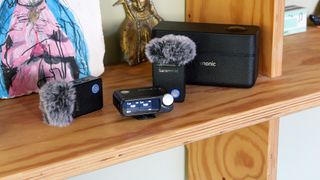
How I tested the Saramonic Ultra
- Used regularly for a week in both quiet and noisy environments
- Paired with iPhone 13 and Panasonic Lumix GH6
I tested the Saramonic Ultra mic both inside and outdoors, and with its receiver physically connected to devices (my Apple iPhone 13 smartphone and Panasonic Lumix GH6 camera) and in solo mode. I made sure to record in a variety of environments in order to see how the microphone handled different background noises and weather conditions.
- First reviewed: February 2025
- Read more about how we test


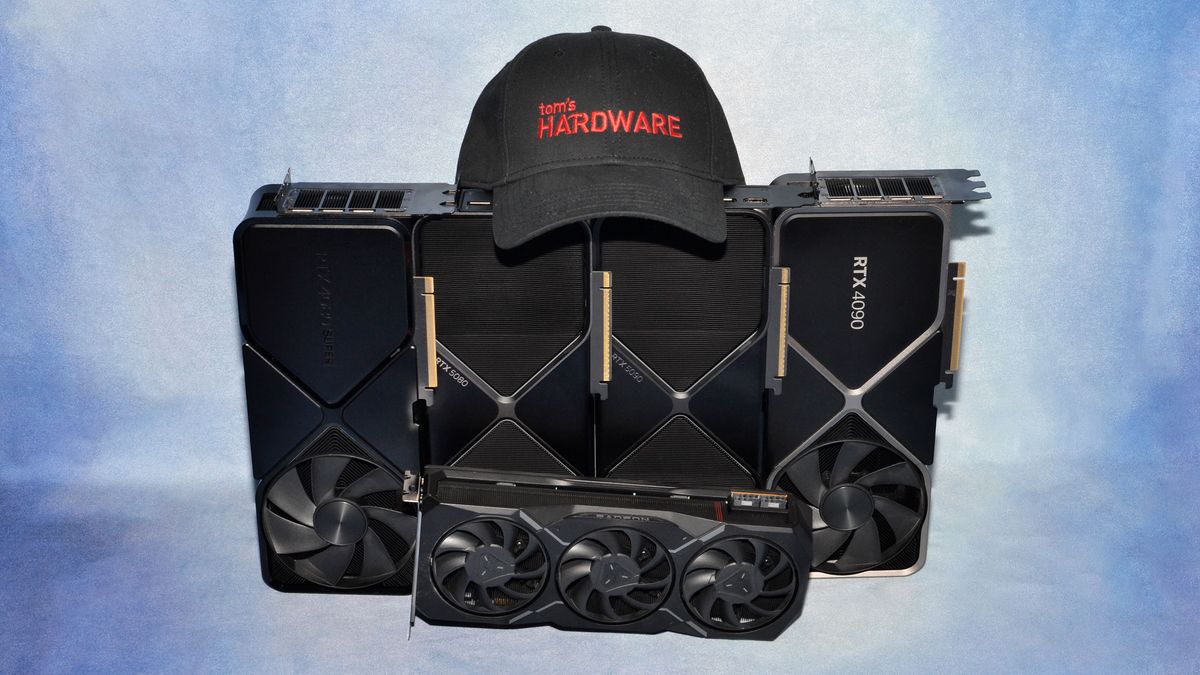







 English (US) ·
English (US) ·